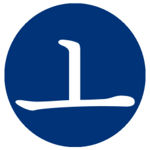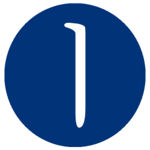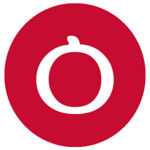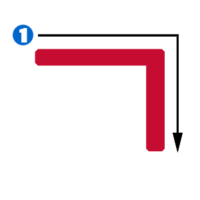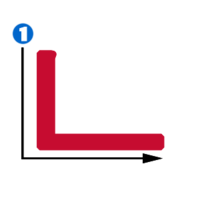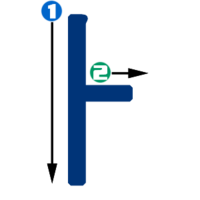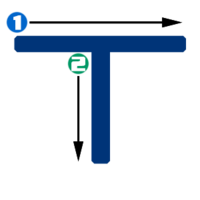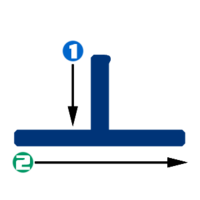Difference between revisions of "Hangeul step 2/fr"
DigitalSoju (Talk | contribs) (Created page with '{{HangeulTop/fr}} {| border=0 style="text-align:center; margin-left: auto; margin-right: auto;" |- | 150px | [[File:Next.png|link=Hange...') |
(→Introduction) |
||
| Line 8: | Line 8: | ||
==Introduction== | ==Introduction== | ||
| − | [[File:Syllable blocks1.png|right|thumb|250px| | + | [[File:Syllable blocks1.png|right|thumb|250px|Une consonne couplée avec une voyelle horizontale et une consonne couplée avec une voyelle verticale]] |
| − | + | Nous allons introduire les consonnes et voyelles en couple comme les consonnes ne peuvent pas être prononcées sans l'aide d'une voyelle. Les étapes 2 jusqu'à 4 comprennent toutes, soit une consonne couplée avec une voyelle horizontale, soit une consonne couplée avec une voyelle verticale. | |
| − | + | Dans cette leçon, vous apprendrez : | |
| − | * | + | * Les consonnes suivantes : [[ㄱ]], [[ㄴ]], [[ㅁ]], [[ㄷ]], [[ㅇ]] |
| − | * | + | *Les voyelles suivantes : [[ㅏ]], [[ㅜ]], [[ㅗ]], [[ㅣ]] |
| − | + | Prenez note que certaines fichiers sont configurés pour tourner en boucle, vous devrez alors les arrêter manuellement. | |
{{-}} | {{-}} | ||
| + | |||
==Step 2== | ==Step 2== | ||
{{Hangeul intro table | {{Hangeul intro table | ||
Revision as of 22:05, 5 September 2010
|
|
|
| Aide · Astuces · Communauté |

|

|
Contents
Introduction
Nous allons introduire les consonnes et voyelles en couple comme les consonnes ne peuvent pas être prononcées sans l'aide d'une voyelle. Les étapes 2 jusqu'à 4 comprennent toutes, soit une consonne couplée avec une voyelle horizontale, soit une consonne couplée avec une voyelle verticale.
Dans cette leçon, vous apprendrez :
Prenez note que certaines fichiers sont configurés pour tourner en boucle, vous devrez alors les arrêter manuellement.
Step 2
|
| ||||||||||
|
This is a horizontal vowel and written to the right of the consonant. For full information about this letter, see ㅏ.
|
This is pronounced like a mix between a G and a K at the beginning of a word. However, when found between vowels, the sound is voiced and makes a /g/ sound. For full information about this letter, see ㄱ. | ||||||||||
| Practice | |
|---|---|
| 가 | |
|
| ||||||||||
|
This sound makes an "ooh" sound, similar to 'moon' or 'blue' or the U sound in Spanish (i.e. usted in "usted"). This is a vertical vowel and written below the consonant. For full information about this letter, see ㅜ.
|
This sound is the same as the N sound in English. For full information about this letter, see ㄴ. | ||||||||||
| Practice | |
|---|---|
| 누 | |
| 나 | |
| 구 | |
|
| ||||||||||
|
This is a vertical vowel and written below the consonant. For full information about this letter, see ㅗ.
|
This sound is the same as the M sound in English. For full information about this letter, see ㅁ. | ||||||||||
| Practice | |
|---|---|
| 모 | |
| 마 | |
| 무 | |
| 고 | |
| 노 | |
|
| ||||||||||
|
This sound is similar to the 'ee' sound in 'see' or 'free.' This is a horizontal vowel and written to the right of the consonant. For full information about this letter, see ㅣ.
|
This is pronounced like a mix between the sounds of a T and a D at the beginning of a word. However, when found between vowels, the sound is voiced and makes a /d/ sound. For full information about this letter, see ㄷ. | ||||||||||
| Practice | |
|---|---|
| 디 | |
| 다 | |
| 두 | |
| 도 | |
| 기 | |
| 니 | |
| 미 | |
| ||||
|
ㅇ represents no sound when found in the initial position of a syllable. Instead, it simply acts as a placeholder since vowels cannot be written by themselves. However, if ㅇ is in the final (bottom) position, it makes an "ng" sound, i.e. 'sing' or 'wrong' (IPA: ŋ ), but these final position sounds will not be discussed until step 5 of this lesson. For now, think of it as a placeholder for a consonant when only a vowel sound must be written. For full information about this letter, see ㅇ. | ||||
| Practice | |
|---|---|
| 아 | |
| 우 | |
| 오 | |
| 이 | |
Real Examples
| Word | Audio |
|---|---|
| 가구 (furniture) | |
| 가나다 (Korean alphabet, i.e. abc) | |
| 가다 (to go) | |
| 가두다 (to lock in) | |
| 고구마 (sweet potato) | |
| 고기 (meat) | |
| 고모 (father's sister) | |
| 구두 (dress shoes) | |
| 기도 (prayer) | |
| 나가다 (go out) | |
| 나누다 (to divide) | |
| 나무 (tree) | |
| 나오다 (to come out) | |
| 나이 (age) | |
| 누가 (who) | |
| 누구 (who) | |
| 누나 (older sister) | |
| 다가가다 (approach to someone) | |
| 다니다 (to go to, work, school etc) | |
| 도구 (instrument,tool) | |
| 마다 (every) | |
| 마디 (joint, knot) | |
| 모기 (mosquito) | |
| 아기 (baby) | |
| 아마도 (maybe,perhaps) | |
| 아우 (man's younger brother-but not used anymore) | |
| 아이 (child) | |
| 오다 (to come) | |
| 오이 (cucumber) | |
| 이기다 (to win) | |
| 이모 (mother's sister) |
Writing
Characters are written in a certain stroke order. Korean letters are written left to right, top to bottom. Remember stroke order is important, so please practice.
Video
Watch this lesson on talktomeinkorean.com's youtube channel:

|

|





